Physics - P3 Waves
1/48
Earn XP
Description and Tags
Name | Mastery | Learn | Test | Matching | Spaced |
|---|
No study sessions yet.
49 Terms
waves transfer energy…
without transferring matter
the features of a wave:
wavelength, frequency, crest (peak), trough, amplitude and wave speed
wavelength
the distance between two successive crests or troughs of a wave
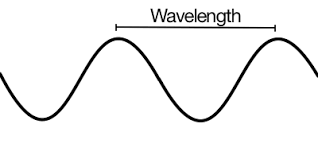
frequency
the number of complete waves that pass a given point per second, measured in hertz (Hz).
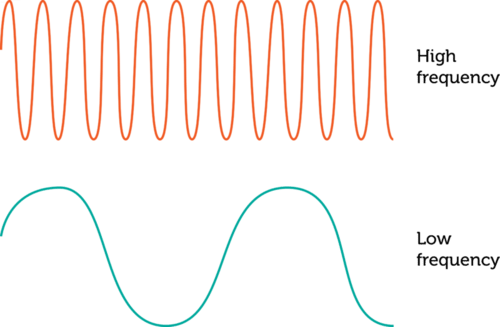
crest
the highest point of a wave
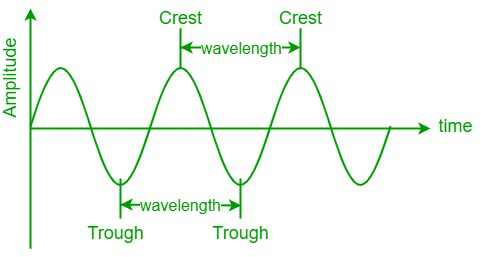
trough
the lowest point of a wave
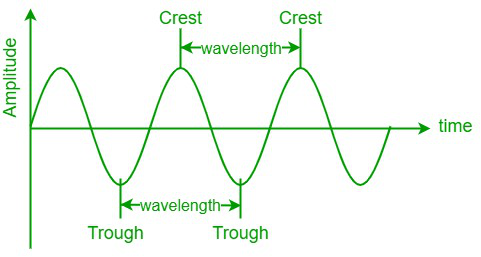
amplitude
the maximum displacement of a wave from its rest position, indicating the wave's energy
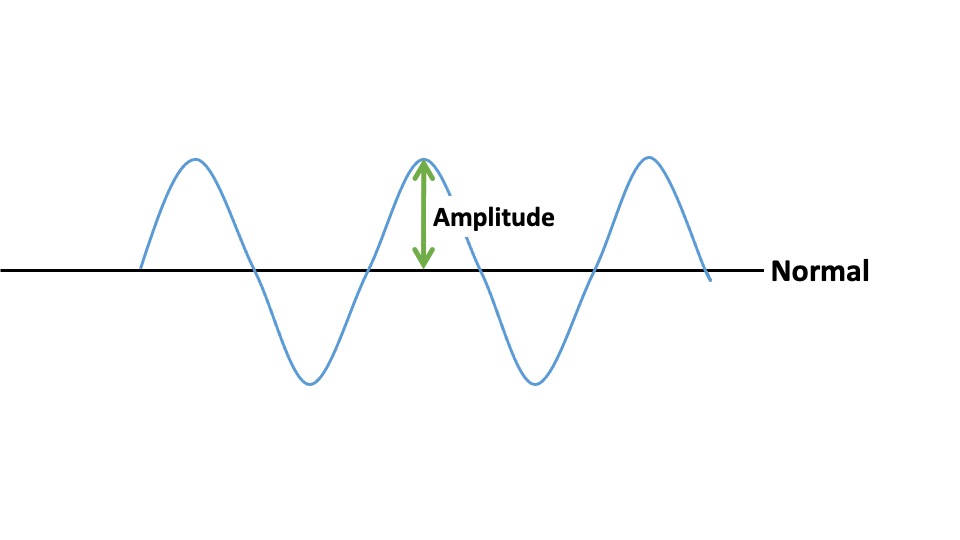
wave speed
the distance a wave travels per unit time, calculated as the product of wavelength and frequency
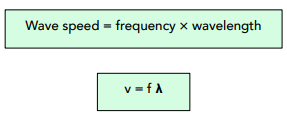
wave speed =
frequency x wavelength
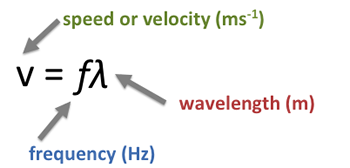
Describe wave motion in ropes and springs
Wave motion in ropes and springs involves vibrations (oscillations) that travel through the medium. When one end is moved up and down, a wave travels along the rope or spring, demonstrating how energy is transferred through oscillations.
Describe wave motion using water waves
Wave motion in water waves is observed when disturbances create ripples on the water surface. These ripples show how energy is transferred through the water, with particles moving in circular or elliptical paths while the wave propagates.
longitudinal waves
Longitudinal waves are ones in which the particles travel parallel to the direction of the wave.
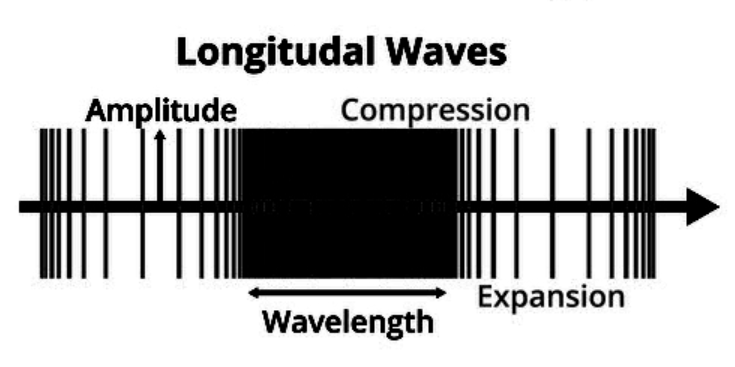
transverse waves
Transverse waves are ones in which the particles travel perpendicular (at right angles) to the direction of the wave (propagation)
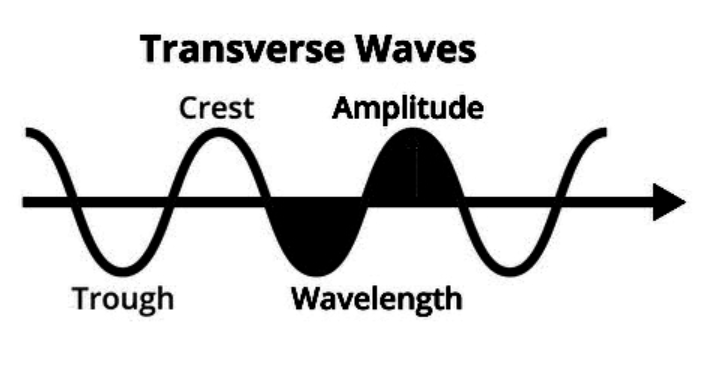
examples of longitudinal waves
sound waves, seismic P-waves (primary), and compression waves in springs or slinkies.
examples of transverse waves
light waves, electromagnetic waves, waves on a string or rope, and seismic S-waves (secondary).
when light hits a mirror…
it reflects from the surface of the mirror
The angle at which the light is reflected depends…
on the angle it hits the mirror, and a ray diagram can be used to show the path of the light rays.
incident ray
the ray of light travelling towards the mirror
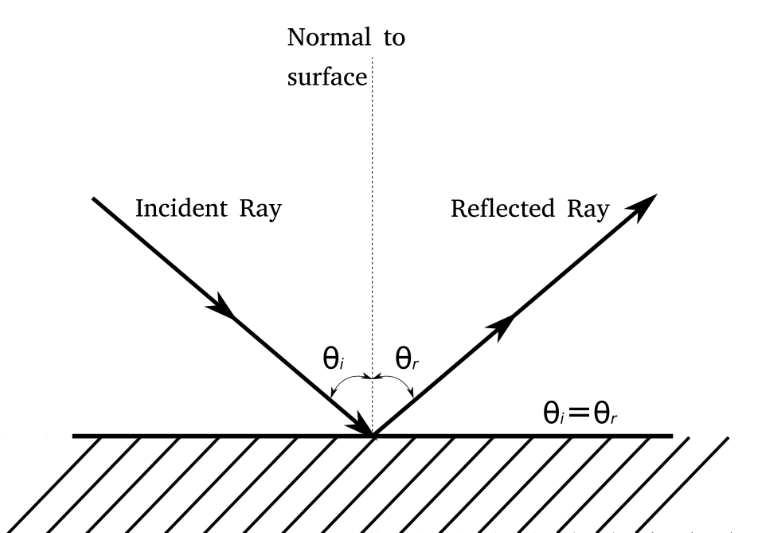
reflected ray
the ray of light which is travelling away from the mirror
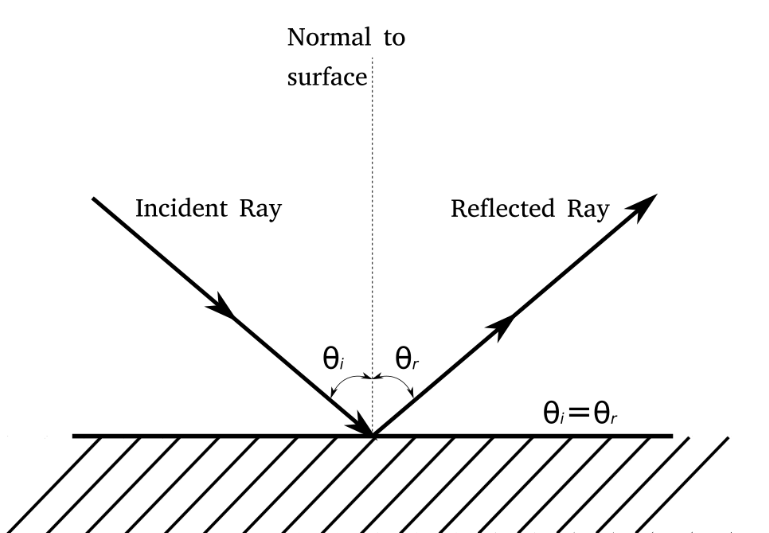
normal
the dashed line is called the normal, and is drawn at 90° to the surface of the mirror. All angles are measured from the normal.
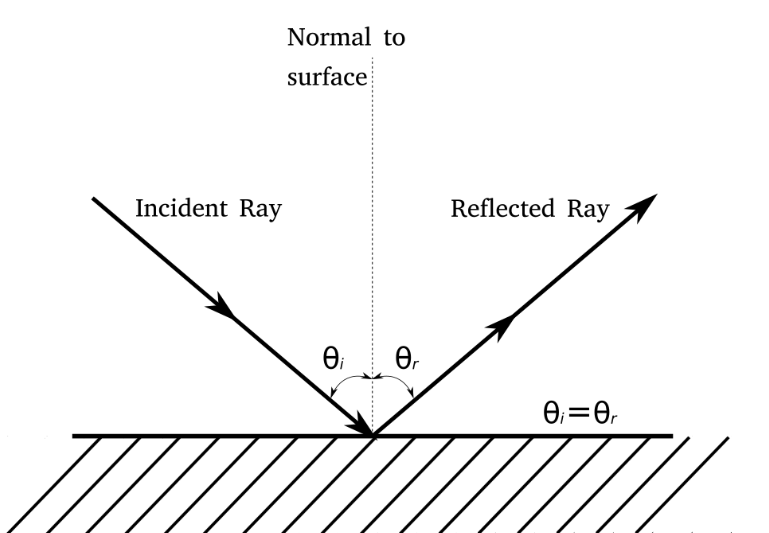
the formation of an optical image by a vertical plane mirror will have
same size, same distance from mirror, laterally inverted
Describe the formation of an optical image by a plane mirror and explain why it is virtual
A plane mirror forms an optical image by reflecting light rays that diverge from an object. The reflected rays appear to come from a point behind the mirror, creating a virtual image that cannot be projected onto a screen because the light rays do not actually converge there. This virtual image is upright, the same size as the object, and laterally inverted.
refraction
the change in direction of a light ray passing from one medium to another
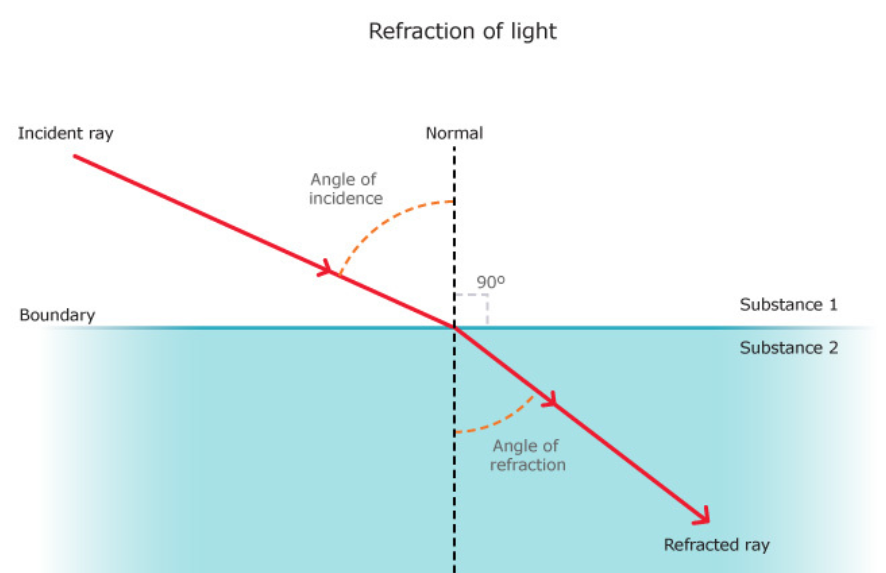
examples of refraction
lenses, magnifying glasses, prisms and rainbows
angle of refraction
The angle of refraction is the angle between the refracted ray and the normal (perpendicular) to the surface at the point of incidence where the light passes from one medium to another. The refracted ray goes toward the normal.
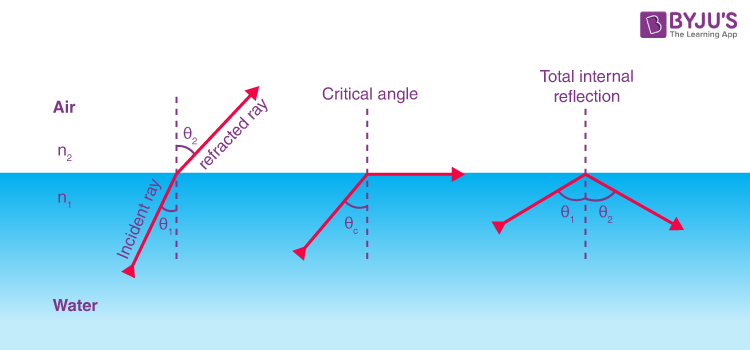
refractive index (n) =
sin i / sin r

critical angle
the angle of incidence at which the angle of refraction is 90° and above which all light is totally internally reflected
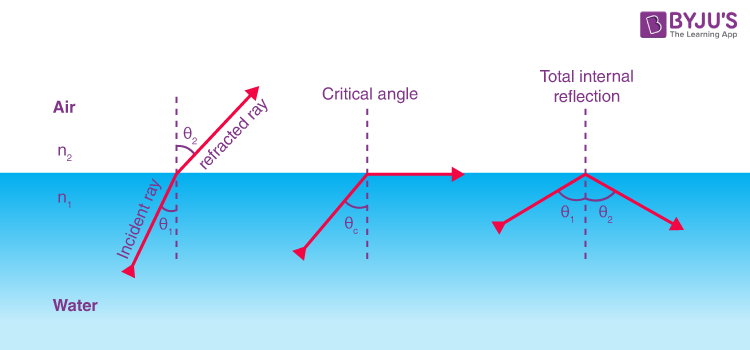
total internal reflection in optical fibres
occurs when light traveling within the fibre hits the boundary at an angle greater than the critical angle, causing it to reflect entirely within the fibre. This allows light to travel long distances with minimal loss.
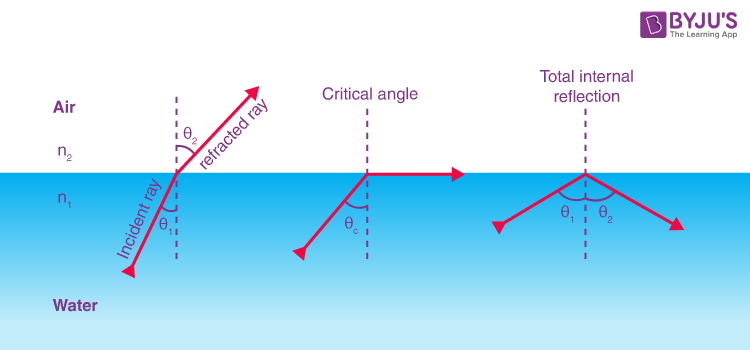
common applications of optical fibres
high-speed internet cables, medical endoscopes, and telecommunications.
diffraction
Diffraction is the spreading out of waves as they pass through a slit or around objects. It occurs when the size of the slit or obstacle is of the same order of magnitude as the wavelength of the incident wave.
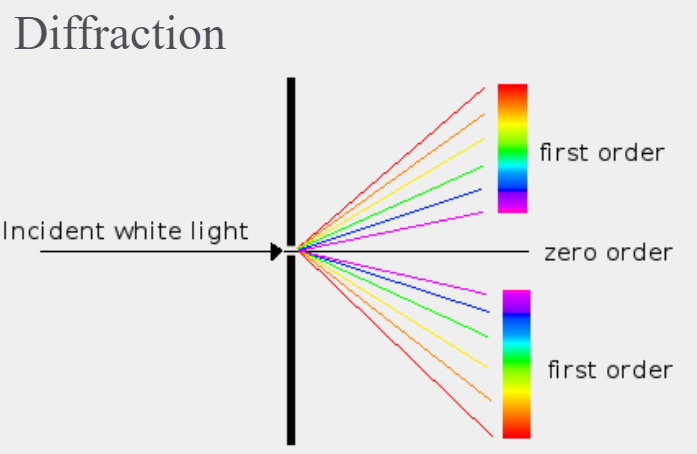
principal axis
an imaginary straight line that passes through the center of a lens or mirror and is perpendicular to its surface.
focal point
the point on the principal axis where light rays parallel to the axis converge (in a converging lens or mirror) or appear to diverge from (in a diverging lens or mirror) after passing through the lens or reflecting off the mirror.
focal length
the distance between the center of a lens or mirror and its principal focus (focal point).
real image
Formed when actual light rays converge at a point after being refracted or reflected. Real images can be projected onto a screen and are always inverted relative to the object.
virtual image
Formed by the apparent intersection of light rays when they appear to diverge from a point. Virtual images cannot be projected onto a screen and are always upright relative to the object.
What are the main regions of the electromagnetic spectrum in order of frequency and wavelength?
Frequency (High to Low): Gamma rays, X-rays, ultraviolet, visible, infrared, microwave, radio.
Wavelength (Short to Long): Gamma rays, X-rays, ultraviolet, visible, infrared, microwave, radio.
What is the speed of electromagnetic waves in a vacuum?
Electromagnetic waves travel at a constant speed of approximately 3.0 × 10^8 m/s in a vacuum, and this speed is nearly the same in air.
Name some applications of the different regions of the electromagnetic spectrum
Radio Waves: Radio and television transmissions, radar.
Microwaves: Satellite television, mobile phones, microwave ovens.
Infrared: Remote controllers for televisions, thermal imaging.
Visible Light: Vision, photography.
Ultraviolet: Detecting fake banknotes.
X-rays: Medical scanning, security scanners.
Gamma Rays: Detection and treatment of cancer.
Describe the harmful effects on people of excessive exposure to electromagnetic radiation.
Ultraviolet: Excessive exposure can lead to damage to surface cells and eyes, increasing the risk of skin cancer and eye conditions.
X-rays and Gamma Rays: Excessive exposure can cause mutations or damage to cells in the body, leading to health problems such as cancer.
How is sound produced by vibrating sources?
Sound is produced when vibrating sources, such as vocal cords or objects, create disturbances in the surrounding medium (usually air), causing particles to oscillate and propagate as longitudinal waves.
Describe the longitudinal nature of sound waves in air.
Sound waves in air consist of compressions (regions of higher pressure) and rarefactions (regions of lower pressure) as particles oscillate back and forth in the direction of wave propagation.
Describe compressions and rarefactions in sound waves.
Compressions are regions of higher pressure where particles are closer together, while rarefactions are regions of lower pressure where particles are spread further apart
the approximate range of frequencies audible to humans
approximately 20 Hz to 20 kHz.
What is needed to transmit sound waves?
Sound waves require a medium, such as air, water, or solids, to propagate because they rely on the vibration and interaction of particles within the medium.
How can you determine the speed of sound in air?
Measure the distance between the source and receiver of sound and the time it takes for the sound to travel that distance. Divide the distance by the time to calculate the speed of sound.
How do changes in amplitude and frequency affect sound waves?
Changes in amplitude affect the loudness of sound, while changes in frequency affect the pitch. Higher amplitudes result in louder sounds, while higher frequencies produce higher-pitched sounds.
echo
the reflection of a sound wave off a surface, resulting in a delayed repetition of the original sound.
ultrasound
sound with a frequency higher than 20 kHz, which is beyond the range of human hearing.
How does the speed of sound vary in different media?
In general, sound travels faster in solids than in liquids, and faster in liquids than in gases, due to differences in the density and elasticity of the media.